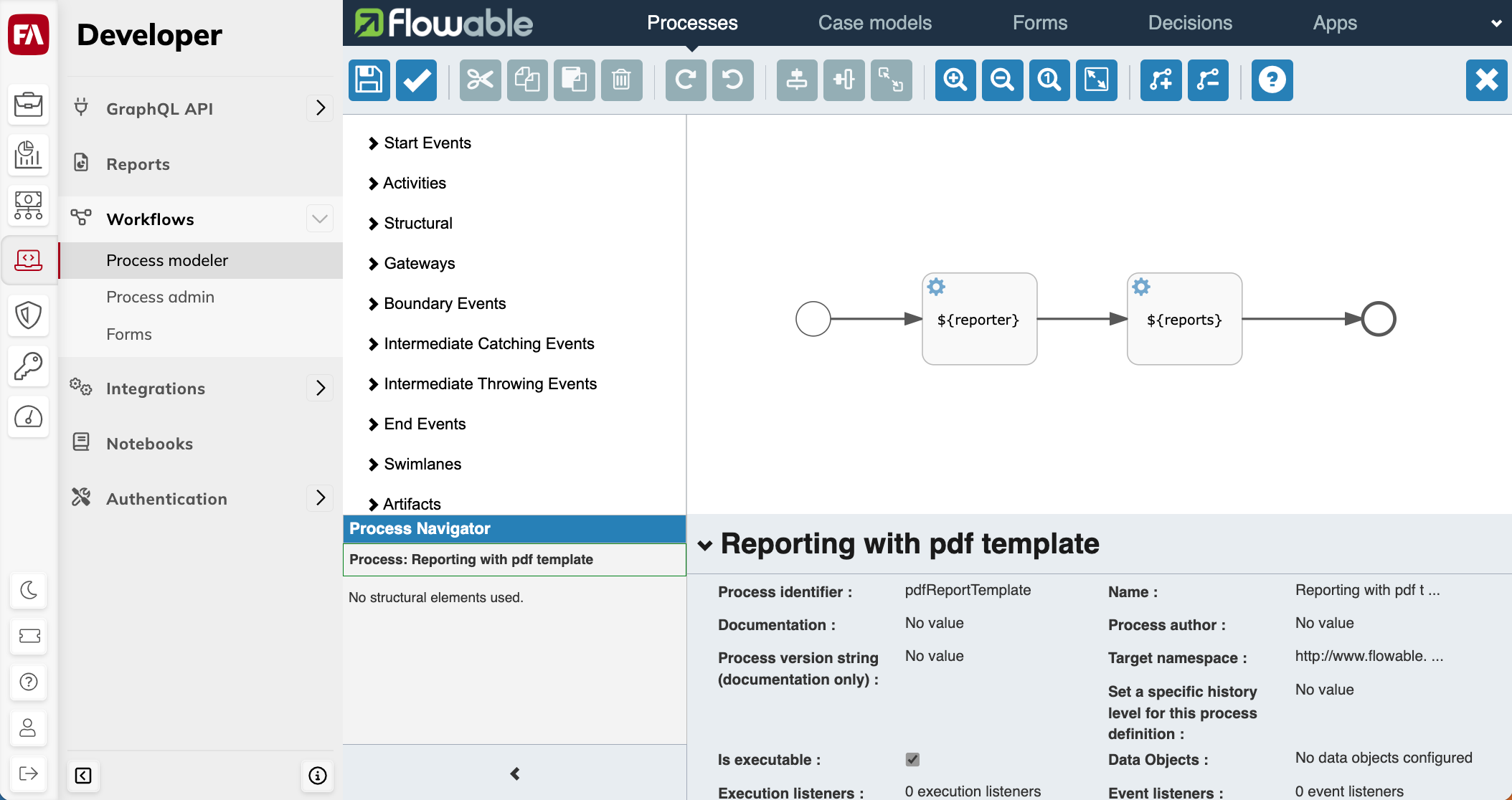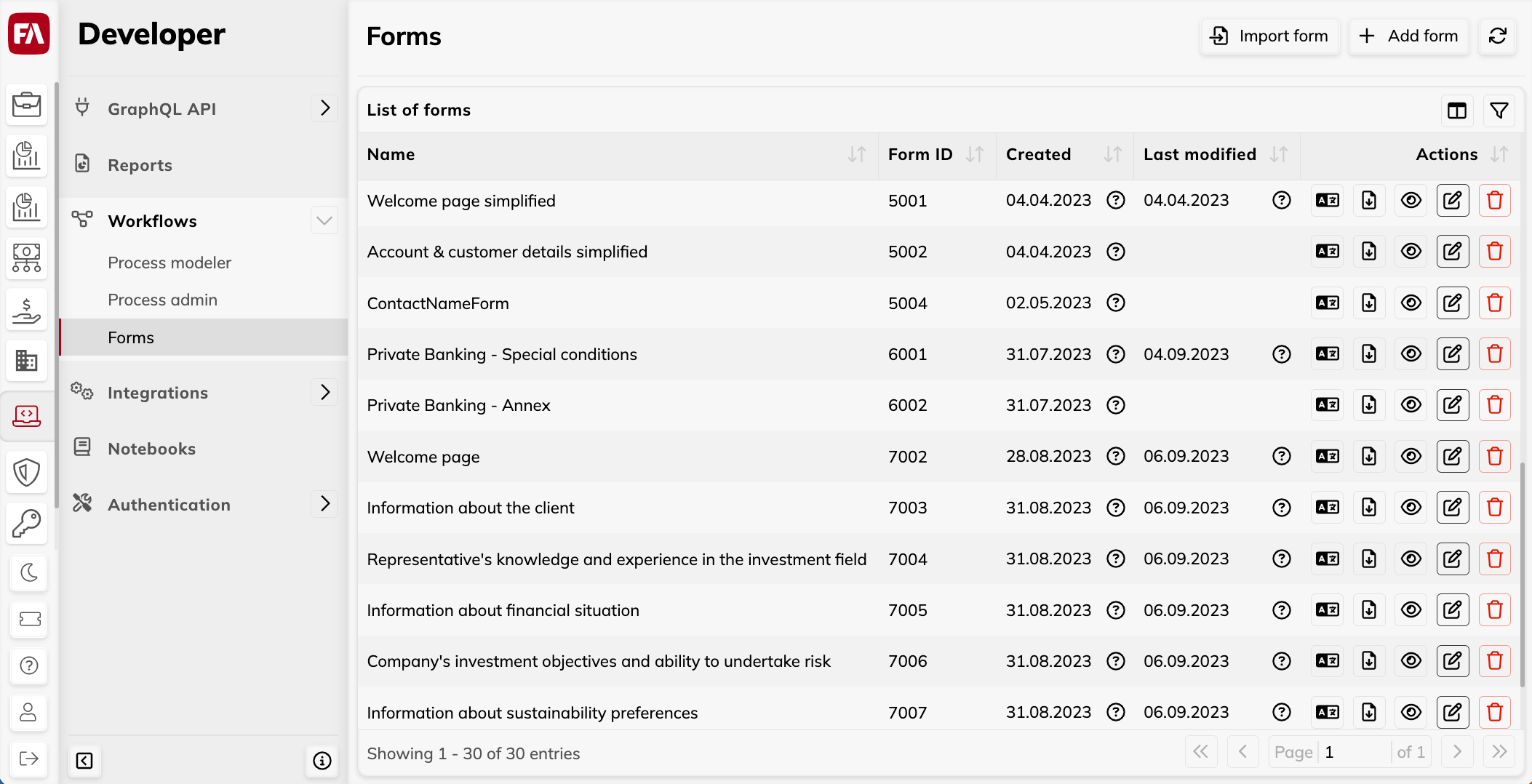Workflows
FA lets you build workflows according to your business needs. For example, you can create a client onboarding workflow that collects client details, recommends a product for the client based on their preferences, creates an investment contract for a client to approve, and imports collected client information in FA. Workflows are designed using the Flowable process engine – a low-code visual tool incorporated in FA Developer application.
Workflows can feature, for example, creating JSReports, fetching data via APIs, importing and updating data in FA, and controlling the workflow progress. To learn more about building workflows, see Building a workflow. You can also collect and display data to a user via forms that can be included in a workflow. To read more about forms and related features, see Forms in a workflow.
For more examples of using workflows in your business, see the Sample workflows section.
There are different ways to make a workflow available to the user. To learn more about how to launch different kinds of workflows, please see Expose a workflow.
Workflows in FA Developer app
Workflows are designed in the FA Developer app. The Workflows view features:
Process modeler that gives you access to the Flowable process engine – a visual tool to create business workflow models and decision tables and package them up for use in a Flowable app. Processes can be accessed through the GraphQL API.
Process admin view that lets you manage workflows.
Forms view that gives you access to the Form.io designer to create interactive forms that you can embed in workflows.
 |
Process modeler
The Process modeler section lets you create workflows. The navigation panel at the top features model editors for different model types. For working with FA, the following options are supported:
- Processes
An editor to create BPMN diagrams. The Business process model and notation (BPMN) specification provides a graphical notation for defining a workflow. To learn more about BPMN, see the BPNM standard description. To learn about how to create workflows, see the Processes editor section in the Flowable design user guide.
- Decisions
Decisions editor to define a set of business rules in the form of DMN decision tables. DMN is a modeling language and notation for the specifying business decisions and business rules. To learn more about DMN, see the DMN standard description. To learn about how to create decision tables, see Determine consequences in a workflow.
- Apps
Apps editor to create a bundle of workflows that can be deployed and shared with users to run. To learn more about how to create and publish packages, see Deploy a model.
Process admin view
The Process admin section provides you access to the Flowable Admin app. You can use it to:
View the deployed and running processes.
Stop a running process.
Import and export processes.
To learn more about the Process admin section, see the Flowable documentation.
Forms view
The Forms view provides you access to the form.io builder to design forms that you can embed in HTML pages. Forms can be accessed through the GraphQL API.
Forms let you collect information that can be further handled by external apps. For example, an app can display a form for new clients to fill in and save the data in FA or print it out as a PDF. To implement this, the form should be included in a process via the User task element.
To create a form, click Add form at the top-right.
You can export forms and transfer them to other environments. To upload a form, click Import form at the top-right.
 |
List of forms
The Forms view shows the List of forms with the following columns:
- Name
The form name is for you to distinguish between the forms, it isn’t shown anywhere else.
- Form ID
The form ID is used to include a form in a process (specify it as a form key value of the User task element when designing a process).
- Actions
The buttons to manage forms:
Edit translations. Use this feature to add and edit form translations, set the default form language, and export translations as XLSX files. In the Edit translations window, you can also preview the form in each language.
Export form in a file that is saved to your computer. Use this feature to copy created forms to another environment.
View, Edit or Delete form.